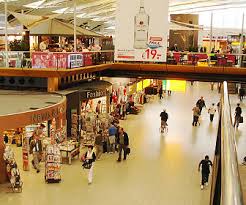Thabo has been my official airport transfer resource in Johannesburg for the last two or so years. With a medium build and dark brown complexion, his eyes are always dancing even when the rest of his face is cast in a serious expression. When Thabo first came to pick me up, we hit it off even before his Toyota Camry had left the gates of Oliver Tambo International Airport because his first question to me was “How do you think the Kenyan economy will perform with the new government?” I whipped my head to my right to take a keener look at this South African who, having just picked me up from the airport, was engaging me in an economic discussion about my own country. I couldn’t even get to the answer as curiosity abounded. “How do you know I am Kenyan?” was my intrigued reply. “Oh I usually like to Google my clients before they arrive so I can know what makes them tick. I found your website and I saw you write a lot about the Kenyan economy, so I thought I could learn some more from you.”
If you visit South Africa often, you will understand why this random conversation with an airport transfer driver would be generate a certain level of astonishment. Let me leave it there before I’m accused of hate speech. Within the first ten kilometers I came to understand that Thabo owns his own company with a fleet of cars that he prefers to lease rather than outright buy, as the cash flow benefits as well as tax efficiency from leasing were much higher. In the two years since I first met Thabo, his business has grown leaps and bounds simply because of his personal touch which I personally experience as he now ensures that he’s the one who always picks me from the airport, rather than his other drivers, whenever I visit Johannesburg for work. On my last visit in November, he proudly showed me his new app called “Africa Ride”. The app allows both him and his travel agent clients to show what time the passenger was picked up, what route the driver used and what time the passenger was dropped off. It then sends an invoice immediately to the client. In a city that experiences “Nairoberry” levels of insecurity, this app provides much peace of mind for his clients.
More importantly, the app gives Thabo greater control over his drivers all over the country. He chuckled as he told me that he can now see where the drivers are at any given time and the excuse that “I got lost” no longer washes with him as passenger destinations are automatically linked to Google maps which every driver’s smart phone has. I gently chided him for his hubris, as earlier in the year I had flown to Cape Town and used his driver there for the airport transfer in what ended up being a disastrous trip. The driver had no clue where my hotel was, despite it being on the iconic V&A waterfront and he got lost several times much to my chagrin (and mild panic at being in the company of a male driver late at night). “Ahh Kerol,” he drawled, “no worries, this app now fixes that nonsense the driver was giving you. And I fired that guy anyway, he was ruining my business!”
On a completely different innovative note, a close relative of mine lives and works in the United States. On my last visit there in 2015, he took a week off to spend time with us and completely switched off his phone. When we asked him whether his boss would be offended if he needed to reach him urgently, Close Relative shrugged his shoulders and said that he was on mandatory unpaid leave. “What’s that?” we asked. Apparently his employer was going through a fairly rough financial period. Sales were flat while costs were creeping up in line with inflation. The company had a mandated inflationary salary increments on everyone’s employment contracts. An effective way to manage these costs was simply to ensure that every single employee took about a month a year (broken down into maximum periods of one week at a time) of mandatory unpaid leave. The immediate effect would be to reduce the entire company’s payroll by the equivalent of one month by the year end. The overall impact would be to effectively cancel out the annual salary increment that had to be given to employees.
“So even if my boss calls, I don’t have to call him back or answer his emails because I am not being paid to,” was Close Relative’s defensive conclusion. “Even my own boss doesn’t answer his calls or emails when he’s on unpaid leave.” Close Relative is a smart one, and he ensured that he aligned his last 2016 unpaid leave week to the Christmas season. “How long can this last?” I asked him during a Christmas Day call. “Well, as a company we only have two choices. We can increase sales by either volume or innovation. Higher volume of sales of course leads to higher costs. Innovation is more desirable as new products have higher margins. But there’s no innovation taking place right now.” I chuckled. There was innovation taking place alright, specifically on the employee costs line. The mandatory unpaid leave was an excellent way of keeping that cost line flat while ensuring that the more unpleasant retrenchment option was kept at bay. The flip side of this innovation was its morale killing effect. While employees were relieved that there were no retrenchments – yet – the culture forming was one that if one was not being paid then one was simply not going to engage or be engaged whatsoever during such time. Innovation evidently takes many forms; some that lead to higher employee and client engagement and others leading to the exact opposite. Have an innovative 2017!

 carolmusyoka consultancy
carolmusyoka consultancy
 @carolmusyoka
@carolmusyoka

